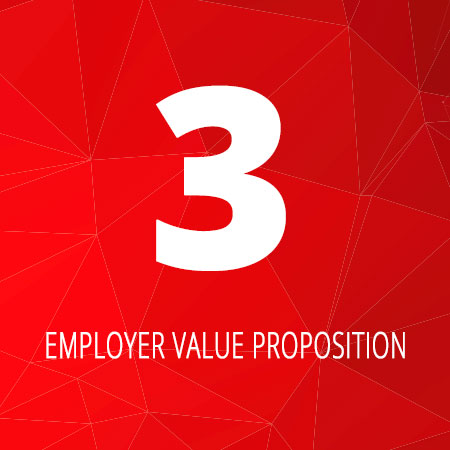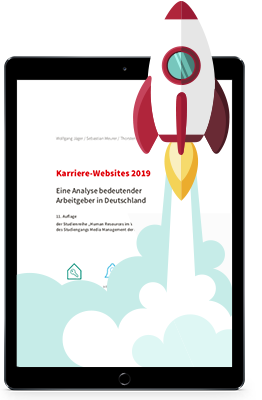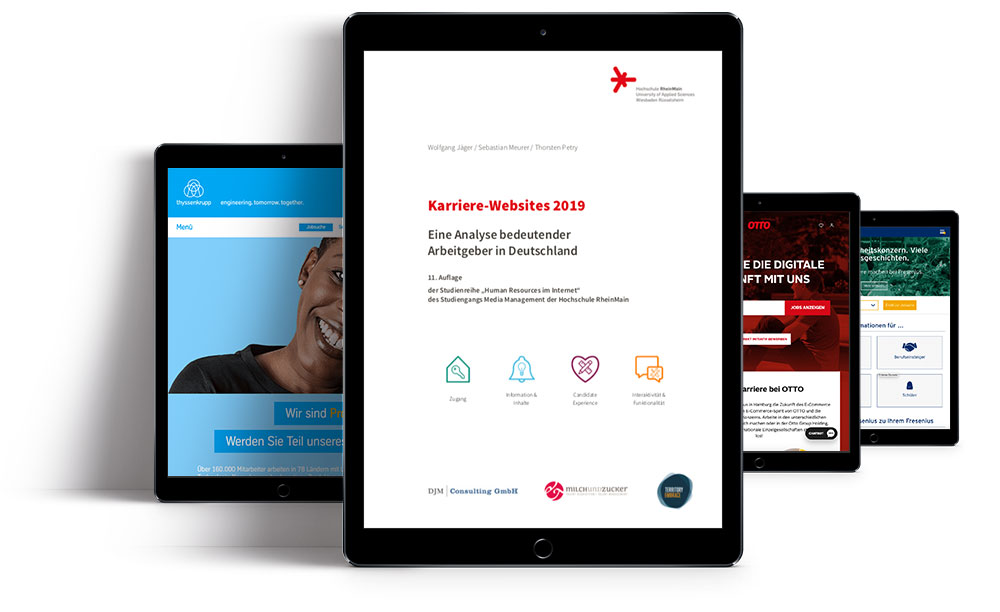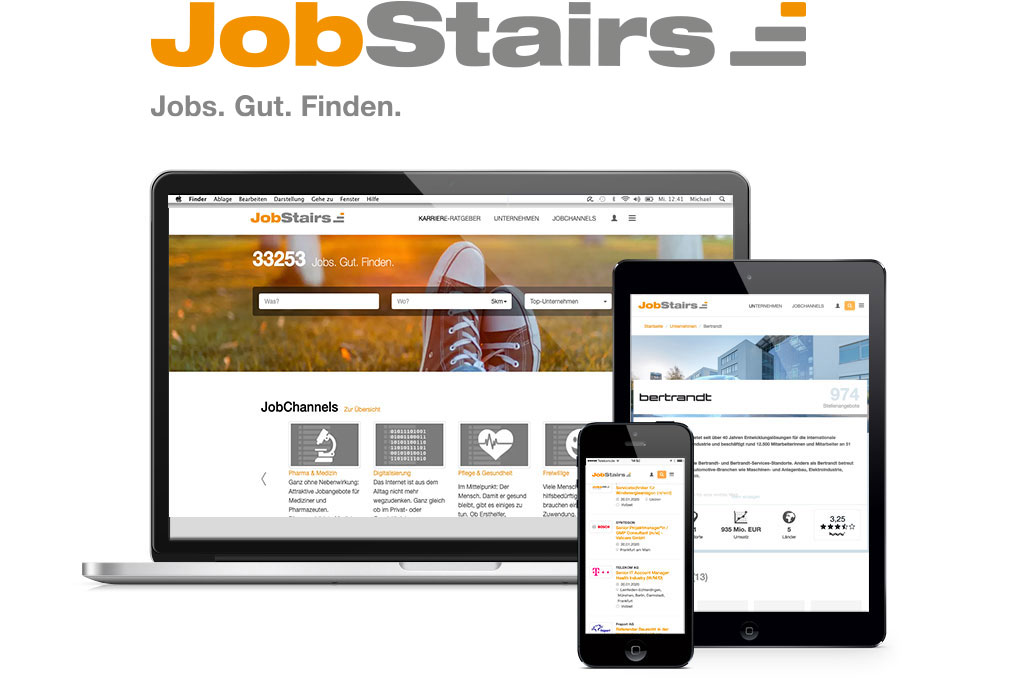Optimise the candidate journey for your applicants with seven rules for success - from 22 years of experience at milch & zucker. Why seven? In 1956, George A. Miller called seven a “magic number”, hypothesizing that humans can hold just 7 ± 2 pieces of information (called chunks) in their short-term memory at any given time. Our short-term memory, therefore, is genetically limited in scope. Read more ...
Is your career website truly user and candidate-centred? Every one of your potential candidates is visiting your career website for a specific purpose, and with a specific search target.
Different visitors have different kinds of cognitive dissonance – and that dissonance has to be resolved in different ways. “I want to change.” – “I want to get the best start in my career.” – “I am looking for a job near my home.” – “I want to earn more money.” – “I need a new challenge.”Be honest: Is your career website mainly company -centred, because what you know best is how your company works? And because you know less about how your candidates out there in the world work? Put yourself in the shoes of a potential candidate. Listen to insight from your employees, and use that insight to develop an information architecture that responds to candidates viewpoints and needs, one that matches up with their own thinking patterns.
Designing your content in a user-centred way will help different candidates with different needs quickly and easily find the solutions they are looking for.

Take your candidates by the hand, and guide them to the right job. This is their ultimate goal (see rule no. 4).
Don’t leave your candidates up to fate. Instead, make sure they can find everything they need on your website with just a simple search.Ensure candidates are clearly directed towards your job vacancies. Remove obstacles and distractions whenever possible. Companies that can consistently avoid stumbling blocks and reduce the number of clicks needed to access vacancies to a minimum will help candidates reach their goal. Consistent navigation, clear labels and headings, easy to understand processes and useful feedback in multi-step processes will help visitors know where they are, where they came from, and where they can go – at all times.

Your company and your employer promise should remain consistent throughout the entire candidate journey.
As an employer, you have other messages you want to convey, besides just on the meta-company level. Whether someone wants to buy something from you or whether they want to spend a large portion of their lives working with you are two very different goals.If you have not done so yet, develop an EVP and use it to define an overarching pledge to current and potential future employees. Develop a persona. Consider candidates’ needs, so that you can develop content perfectly tailored to them. Develop core messages for different target groups (different professional groups and different life cycle stages), so that you have a basis for communication with any visitor – from potential student worker to Senior Treasurer – and can quickly create a good, relevant, and attractive offer.
Make it easier for your candidates to understand the added value and benefits you can offer them – such as mentoring and integration for young professionals (fast learning curve) and international, challenging duties, as well as good work/life balance (new challenges and stable values) for experienced professionals who are seeking a new career. Doing so is also all about solving cognitive dissonance, just like we talked about with rule no. 1.

Finding the right balance between integration into the candidate journey, functional design and easy handling on all devices is the key to having a successful career website.
It sounds simple. It really can be simple, too, if you focus on evolution.Design your website so visitors can scan it and identify a pattern.
Give your candidates chunk food:
As many studies have shown, we do not consume information loosely, without context, but rather in chunks. The human brain works to recognise these chunks, and it is easier for visitors to process information if you offer it to them in recognisable bits and bites. For example:
Using this approach makes it easier for candidates to search based on their needs or goals. Chunks are a great method of orientation, and improve the candidate experience.
Take a cue from eCommerce pages:
Optimise the candidate experience by treating candidates like customers, and by treating a job vacancy like a product.

Candidates don’t just want an appealing experience, they want one that pays off. Finding what you are looking for and getting results quickly isn’t just a bonus – it’s essential. This is why you need to link relevant content directly to relevant jobs.
Relevant content is one of the most important distinguishing features for drawing in candidates. Consumers are getting better and better at tuning out irrelevant advertisements, or all advertisements. Personal advertisements do not engender trust.However, trust in employers is becoming an ever more important factor on the labour market. Content helps companies gain this trust. It does so by meeting the needs and desires of the target audience (resolving cognitive dissonance), by being well-made (relevant and “entertaining”), and by being placed on the right channels within the overall candidate journey as a whole.
Your career website serves as the hub for your candidate journey. Relevant content matches up perfectly with relevant products – in your case, the right job vacancies. You have to link the front end and back end – your career website and your job market. Relevant content helps you generate better range and acceptance in the conversion funnel and in distribution (owned media).

If job advertisements are the products our target audiences are looking for, then why isn’t it enough to just use them to advertise your company?
In some cases, a vacancy filled with rational facts may not be the most relevant option. Emotions and feelings are just as important as facts in how we make our decisions. How often do we listen to our gut instincts? To understand how we make decisions, let’s return to our brains. Decisions tend to grow from a game of ping-pong between our limbic system and our prefrontal cortex,between emotion and rationality. “What is the purpose of what I am doing here?” “Products” on a highly competitive labour market can be very similar, making the question of “purpose” extremely important. Content places the focus on emotional needs. In the digital age, we tune out everything that is irrelevant to us. Storytelling serves as a vehicle for conveying your “purpose” in the most unique way possible. Storytelling uses associations to essentially design a thought in the reader’s mind. Companies use dramatic composition and narrative elements to create subtexts readers can remember for a long period of time.
Create little stories and images in the reader’s mind to help you anchor your employer promise. Use all the opportunities your career website offers you as a multi-media communication platform. Just follow Hollywood’s number 1 rule: “If you have something to say: don’t say it. Show it!”

Think of candidates as your customers, and offer them good service. Ensure they can contact you directly. Be clear and detailed in stating why you want people to visit your career website.
The call-to-action may not be the newest invention in communication design, but it is still a key success factor for your career website. Smart user guidance always offers clearly described access and response options at the right points.If you want a visitor to click a certain button, then tell them that’s what they should do. Be approachable, so candidates will trust you. Show your true colours. Answer their questions.
Actively offer help or support. Invest not only in your employer promise, but also in fulfilling that promise – in the next step: Consider your promise not the last step in recruitment, but as the first step in a potential onboarding process.


Review the performance of your career website! The study offers sound data and clear recommendations for action as well.
Companies in Germany
Cluster
Criteria


We can work with you to develop your entire information architecture as the foundation of your career website, starting by defining goals and KPIs.
Then we can help you with content and technical design.
First, we will develop a rough concept, incl. an initial situation, objective, and potential solution.
We will consider your central creative idea, and how your career website can serve as the logical hub of your candidate journey. We will define a page structure, page types, navigation, and user guidance. We will create initial wireframes, mobile and function descriptions, for instance for planned features like a job subscription, a chatbot, etc., including everything in our first project plan.
Then, we will create a detailed concept with a more thorough project plan, and all relevant screens / templates as wireframes for the agreed devices.
The next milestone is a first, clickable prototype in XD with initial layouts for different page types.
After you have accepted the detailed concept and associated schedule, we will develop all technical and editorial content based on an editing and approval process. You will always have an overview of your project and its timeline.
Your content will be prepared to offer the best possible user experience and to be search-engine optimised.

